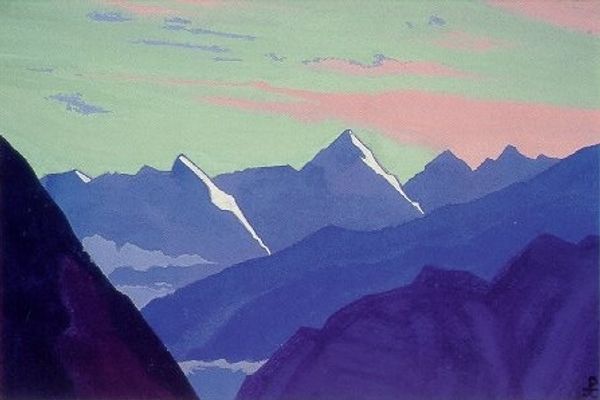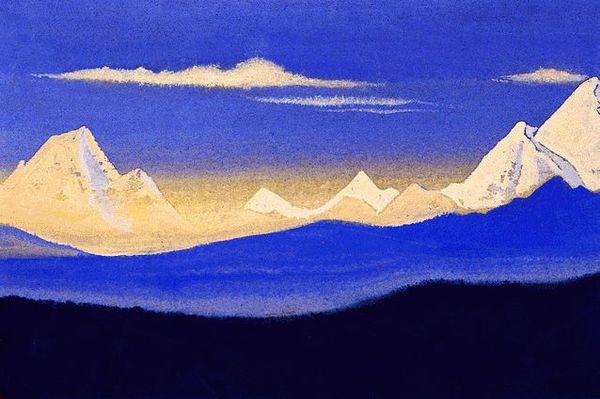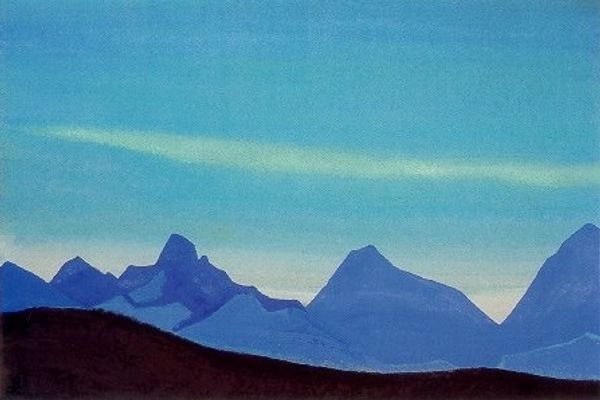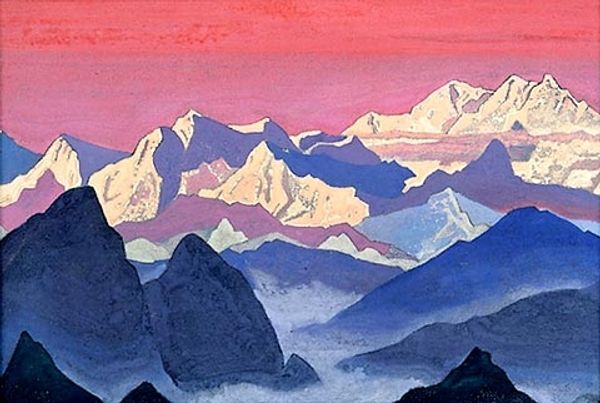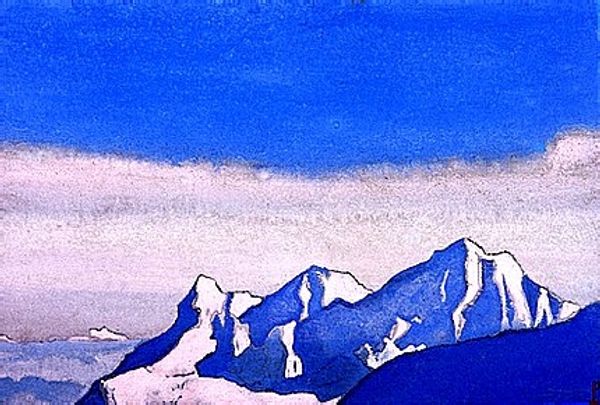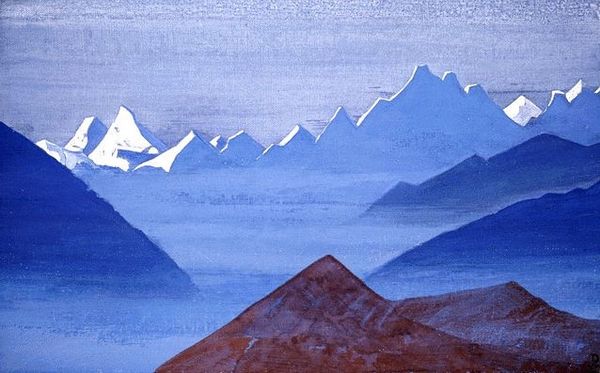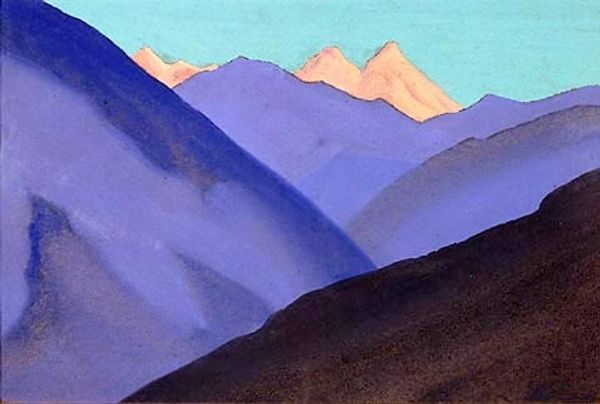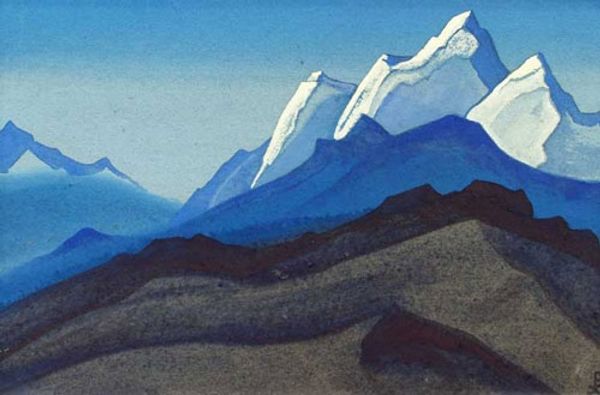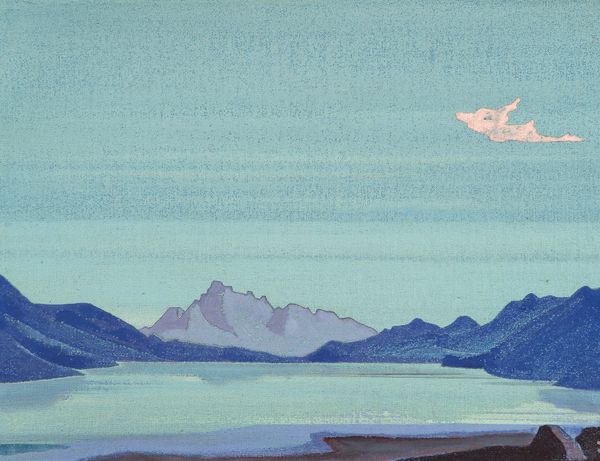
painting, watercolor
#
sky
#
painting
#
landscape
#
oil painting
#
watercolor
#
mountain
#
orientalism
#
watercolor
Copyright: Public domain
Editor: Here we have Nicholas Roerich’s "Himalayan Morning. Sunrise.," painted in 1937. The colors are striking. There is a sort of calmness about the painting. It makes you feel pensive and solitary, which seems interesting considering that a mountain is never alone but is part of a whole mountain range. How do you interpret this work? Curator: Roerich's Orientalism isn't simply aesthetic; it's deeply intertwined with theosophy and a utopian vision of Eastern spirituality offering solutions to Western materialism. He elevates the Himalayas, imbuing it with spiritual significance as a center of wisdom and cosmic energy. Editor: How does that tie into the historical context? Curator: Think about the 1930s: global anxieties were escalating. Roerich’s paintings provided an escapist vision, a call back to ancient wisdom for a troubled present. However, it’s important to question the potential romanticism of "Himalayan Morning". To what extent does it perpetuate a one-dimensional image of a culturally complex region? Editor: It’s like he’s created a brand identity of the mountain for his theosophist movement. I didn’t realize all of that could be found in what at first looks like just a pretty landscape! Curator: Exactly! Art becomes a tool for constructing ideologies, even unintentionally. By delving into the socio-political background and considering the artist's belief system, we can reveal multiple layers in art, moving past initial impressions to understand broader narratives. Editor: This painting's now much more layered than what I had initially considered. It really forces you to re-evaluate your own assumptions when you examine the values that were placed on the piece.
Comments
No comments
Be the first to comment and join the conversation on the ultimate creative platform.
